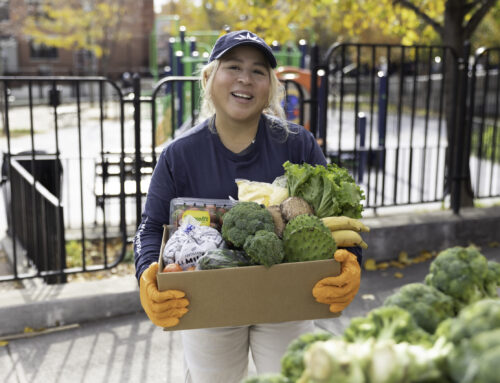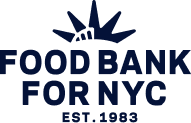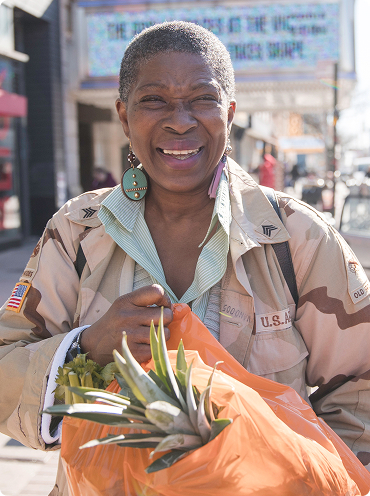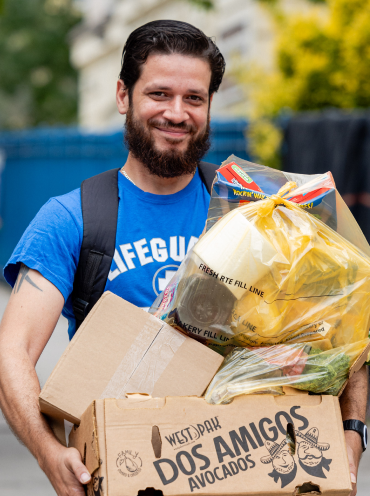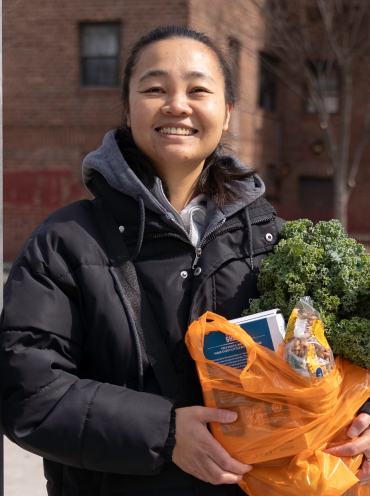New York, NY — Food Bank For New York City today released new data on the state of food insecurity in light of the COVID-19 outbreak. Food Bank and its network of more than 800 soup kitchens and food pantries are facing several unique challenges.
With the necessary economic shutdown putting many people out of work and rapidly increasing the need for assistance, the demand on the emergency food network has surged. Food Bank has distributed nearly 21 million meals across the city since the start of the outbreak, an increase of 20 percent in overall food distribution compared to the same period last year. See below for more key findings and a list of hot spot neighborhoods for food insecurity.
“This virus represents an extreme and unprecedented hardship across our entire city but especially for our financially and medically vulnerable neighbors, and it is absolutely critical that we rise to the challenge for them,” said Food Bank For New York City President and CEO Leslie Gordon. “This is the new normal for New York City, and Food Bank is doing everything possible to meet the need that exists today and the need that will continue to exist in the coming weeks, months, and years. Our warehouse is open, our trucks are on the road, and our staff are out in communities every day bringing food to those who need it most, and with the help of our partners in government and throughout the city, we will continue to pursue every opportunity available to support low-income New Yorkers as we all take on this pandemic together.”
Among the report’s key findings:
- 75% of food pantries and soup kitchens surveyed reported serving more New Yorkers in April 2020 than in the months leading up to COVID-19, with nearly one-third (31%) reporting their number of visitors more than doubling.
-
- Of the pantries and kitchens reporting an increase in visitors, 91% reported an increase in first-time visitors, 79% reported an increase in families with children, 71% reported an increase in laid-off or furloughed workers, and 59% reported an increase in undocumented immigrants.
-
- With their resources drained, more than half of food pantries and soup kitchens surveyed reported running out of food during April, and 70% reported serving people who had traveled from another borough.
- At the outbreak’s peak, roughly 40% of the city’s soup kitchens and food pantries were closed, largely because they are run by seniors who are at high risk during the health crisis. Making matters worse, 73% of these closed agencies are concentrated in high-need areas.
- The proportion of closed soup kitchens and food pantries the highest-need communities is even greater when looking at the borough level:
-
- The Bronx: 50% of food pantries and soup kitchens closed; 90% of those are in the highest-need communities;
- Brooklyn: 36% of food pantries and soup kitchens closed; 85% of those are in the highest-need communities;
- Queens: 38% of food pantries and soup kitchens closed; 54% of those are in the highest-need communities;
- Manhattan: 32% of food pantries and soup kitchens closed; 59% of those are in the highest-need communities;
- Staten Island: 28% of food pantries and soup kitchens closed.
- The Bronx: 50% of food pantries and soup kitchens closed; 90% of those are in the highest-need communities;
-
Facing growing food insecurity, a weakened emergency food network and a simultaneous need to reimagine how to distribute resources, Food Bank has engaged a group of Community Response Partners in each borough to serve as food hubs and make up for agency closures in high-need communities. Food Bank is fast-tracking deliveries of food and other essentials to these hubs and collaborating with them to deploy new distribution methods like home delivery, drive-through pick-up pantry bags and special senior distribution hours.
See the full report here.
Food Bank For New York City is NYC’s largest hunger-relief organization. For more than 40 years, we’ve been empowering every New Yorker to achieve food security for good. Together with our member network of nearly 800 soup kitchens and food pantries, we provide fresh produce, culturally relevant food, SNAP assistance and nutrition education to nearly every neighborhood in all five boroughs. Learn more or get involved at foodbanknyc.org.
Media Contact
Stefanie Shuman
Director, Media Relations
sshuman@foodbanknyc.org

